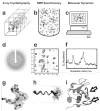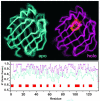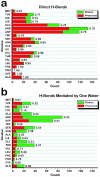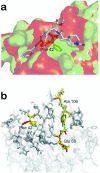Target flexibility: an emerging consideration in drug discovery and design
- PMID: 18785728
- PMCID: PMC2701403
- DOI: 10.1021/jm800562d
Target flexibility: an emerging consideration in drug discovery and design
Figures










References
-
- Abraham DJ. Comprehensive Medicinal Chemistry II. Elsevier; Oxford: 2007. Structure-based Drug Design - A Historical Perspective and the Future.
-
- Bolton W, Perutz MF. Three dimensional fourier synthesis of horse deoxyhaemoglobin at 2.8 Angstrom units resolution. Nature. 1970;228:551–552. - PubMed
-
- Fermi G, Perutz MF, Shaanan B, Fourme R. The crystal structure of human deoxyhaemoglobin at 1.74 A resolution. J Mol Biol. 1984;175:159–174. - PubMed
-
- Kendrew JC, Bodo G, Dintzis HM, Parrish RG, Wyckoff H, et al. A three-dimensional model of the myoglobin molecule obtained by x-ray analysis. Nature. 1958;181:662–666. - PubMed
-
- Watson H. The Stereochemistry of the Protein Myoglobin. The Stereochemistry of the Protein Myoglobin. 1969;4:299–333.
Publication types
MeSH terms
Substances
Grants and funding
LinkOut - more resources
Full Text Sources

